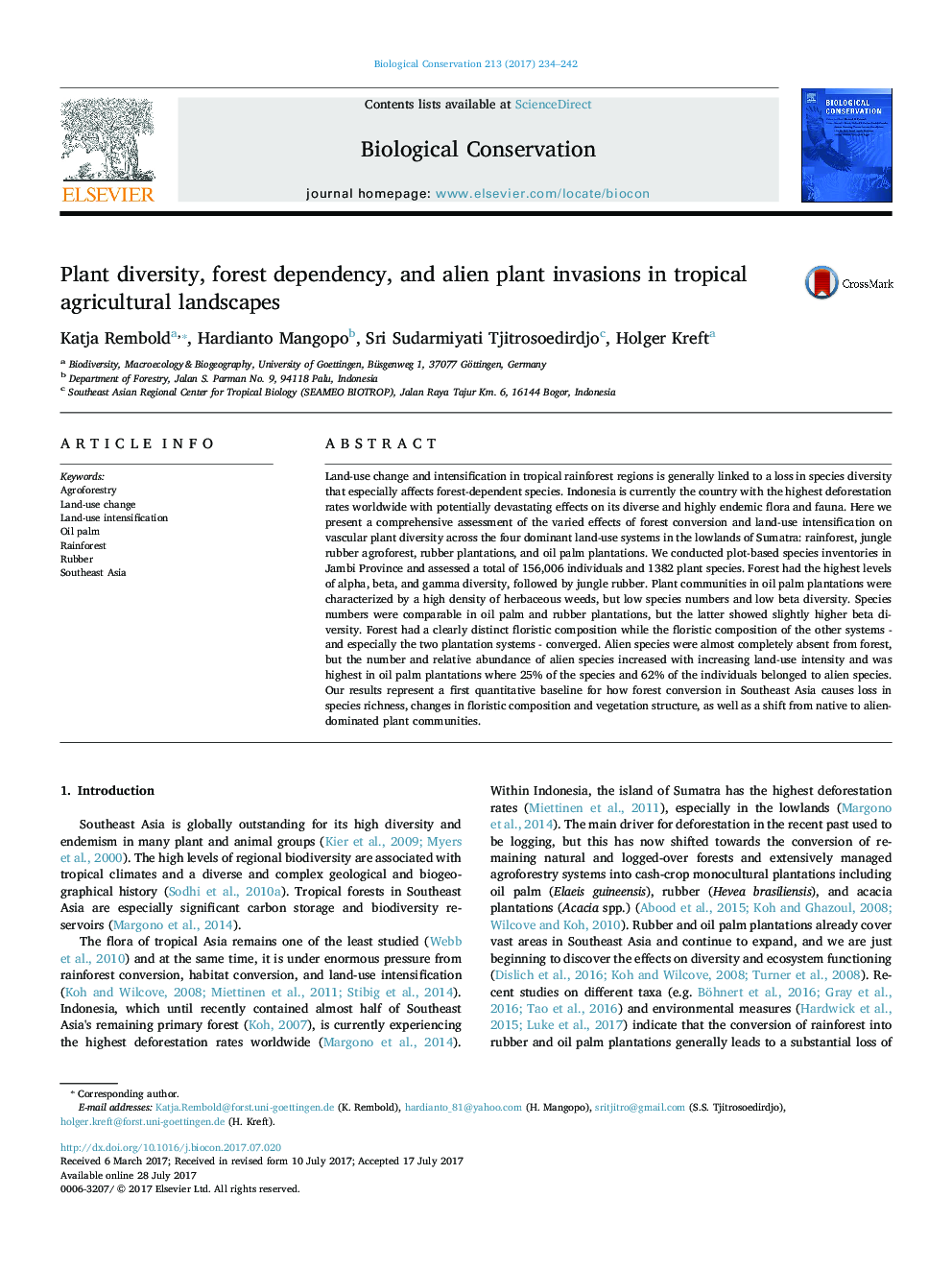| Article ID | Journal | Published Year | Pages | File Type |
|---|---|---|---|---|
| 5742998 | Biological Conservation | 2017 | 9 Pages |
â¢Forest conversion in Southeast Asia has the following consequences:â¢Loss in plant species richness and diversity in agricultural systems.â¢Changes in floristic composition and vegetation structure.â¢Loss of forest-dependent species.â¢A shift from native to alien-dominated plant communities.
Land-use change and intensification in tropical rainforest regions is generally linked to a loss in species diversity that especially affects forest-dependent species. Indonesia is currently the country with the highest deforestation rates worldwide with potentially devastating effects on its diverse and highly endemic flora and fauna. Here we present a comprehensive assessment of the varied effects of forest conversion and land-use intensification on vascular plant diversity across the four dominant land-use systems in the lowlands of Sumatra: rainforest, jungle rubber agroforest, rubber plantations, and oil palm plantations. We conducted plot-based species inventories in Jambi Province and assessed a total of 156,006 individuals and 1382 plant species. Forest had the highest levels of alpha, beta, and gamma diversity, followed by jungle rubber. Plant communities in oil palm plantations were characterized by a high density of herbaceous weeds, but low species numbers and low beta diversity. Species numbers were comparable in oil palm and rubber plantations, but the latter showed slightly higher beta diversity. Forest had a clearly distinct floristic composition while the floristic composition of the other systems - and especially the two plantation systems - converged. Alien species were almost completely absent from forest, but the number and relative abundance of alien species increased with increasing land-use intensity and was highest in oil palm plantations where 25% of the species and 62% of the individuals belonged to alien species. Our results represent a first quantitative baseline for how forest conversion in Southeast Asia causes loss in species richness, changes in floristic composition and vegetation structure, as well as a shift from native to alien-dominated plant communities.
